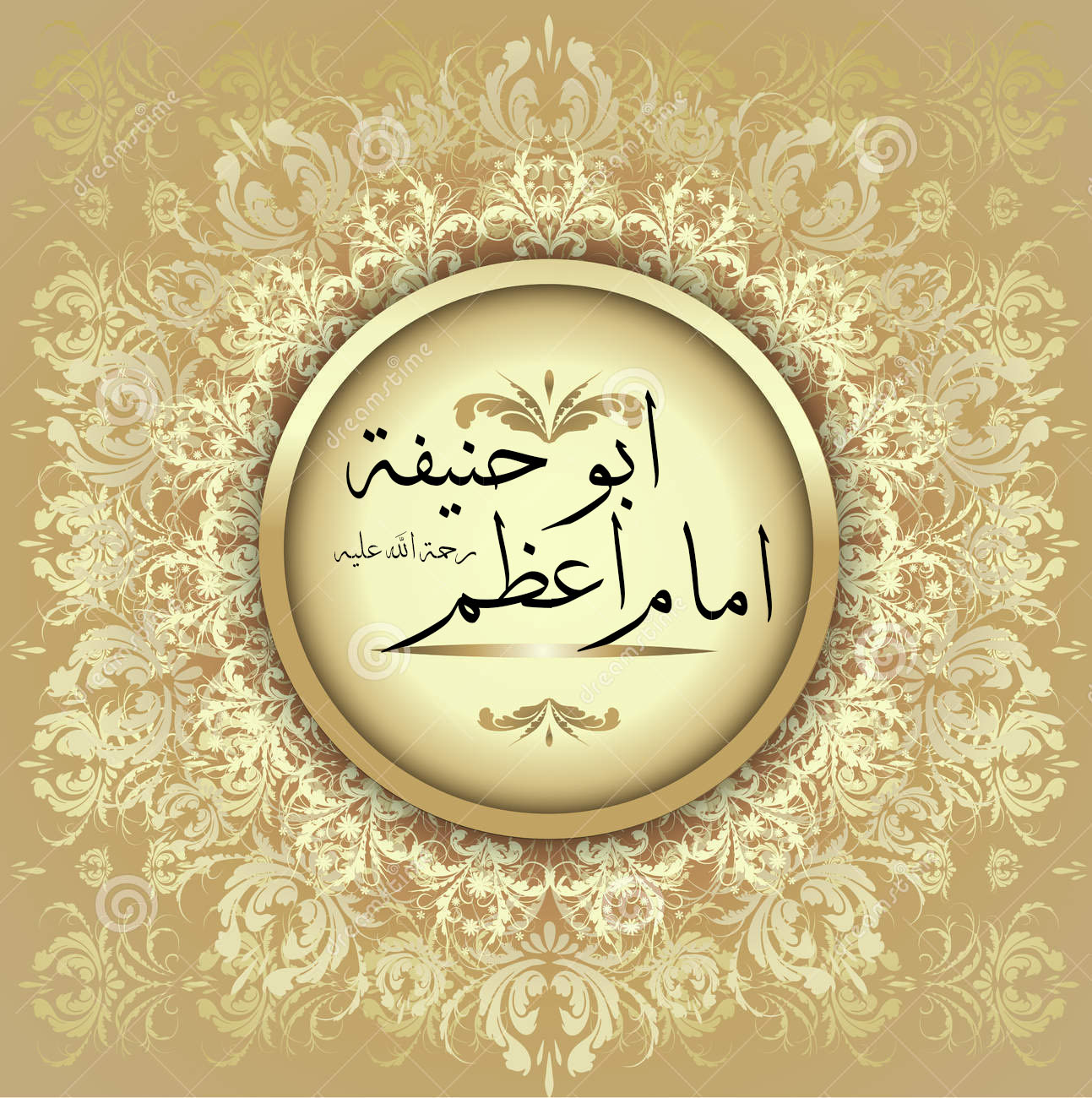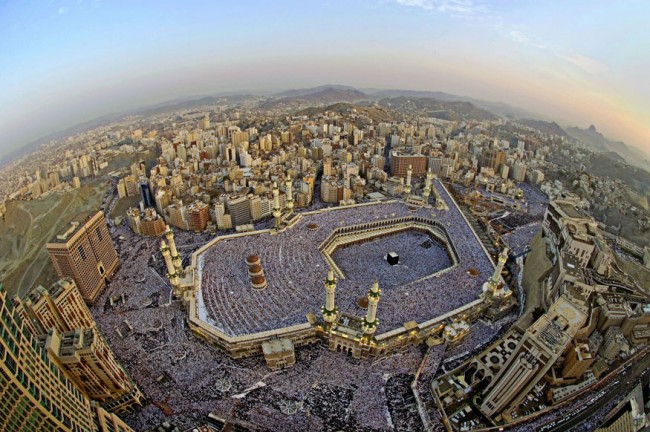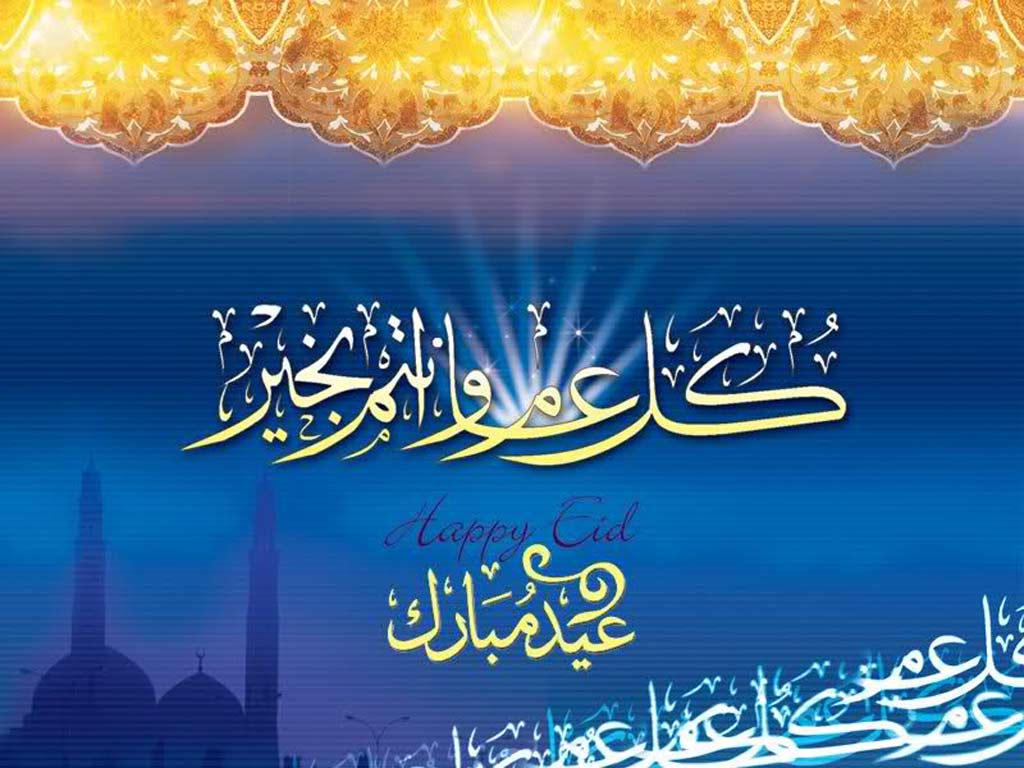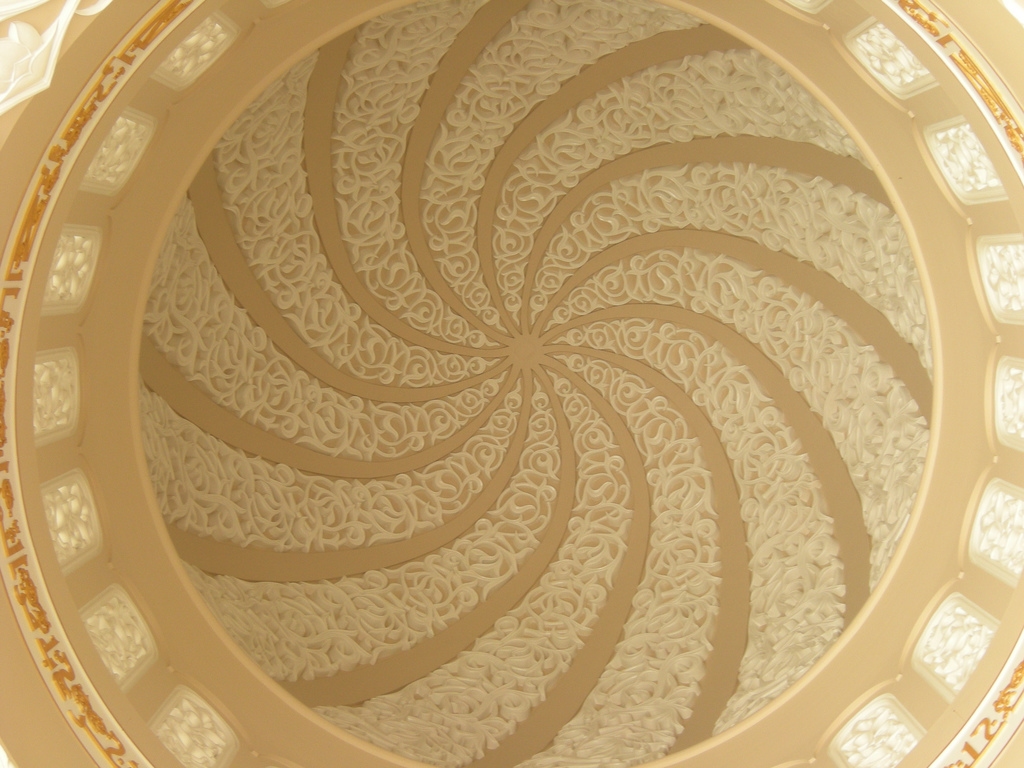False allegations of Badiud-Din al-Sindi and a refutation upon him
The downloadable book at the bottom is an academic reply by the Saudi scholar from the town of Ahsa known as Shaykh Dr. Rā’id al-Mulla to a number of claims, distortions and outright lies of the late Badiud-Dīn al-Sindi (d. 1996) of Pakistan. The latter being probably the foremost Hadith authority for the self-styled “Ahl-e-Hadith” sect which also describes itself as being “Salafi.” His prominent students and admirers include the likes of the late Zubair Ali Zai (d. 2013), Wasiullah Abbas and Irshad al-Haqq al-Athari. The late Muhammad Nasirud-Din al-Albani (d. 1999) and some of his associates were also concomitant with the late al-Sindi due to their sectarian associations. Such associates include the late Muqbil ibn Hadi al-Wadi’i (d. 2001), Rabi al-Madkhali, Ali Hasan al-Halabi, Salim al-Hilali, Asim al-Qaryuti and others.
The name of the book in response to al-Sindi is “Iftira’at Badiud-Dīn al-Sindi wa al-Radd alaihi – False allegations of Badiud-Din al-Sindi and a refutation upon him.” Dr. Rā’id al-Mulla has responded to a number of the claims raised by al-Sindi in his anti-Hanafi diatribe filled work known as at-Tawam al-Mur’isha fi bayan tahrifat Ahl al-Ray al-Mudhisha.
Some of the features of the reply to Badiud-Din al-Sindi mentioned the following:
- Al-Sindi was a vehemently anti-Hanafi personality who went to the extreme of saying that Hanafi Fuqaha (jurists) are – مُخَنَّثَيَّ bisexual/effeminate! This was noted from him during his lessons in the Masjid al-Haram in Makka during the mid 1970’s while he used to teach Zahiri fiqh from the Muhalla of Ibn Hazm al-Zahiri (d. 456 AH)! Complaints were raised against him back then which lead to his prevention from teaching in the sacred Masjid
- His son Nurud-Din was said to have been directly associated with the pseudo-Salafi extremist known as Juhayman al-Utaybi and the false Mahdi known as Muhammad al-Qahtani, who both violated the sanctity of Masjid al-Haram in Muharram 1400 AH/November 1979 with a few hundred more extremists. This revolting act lead to the killing of Muslims and the prevention of daily prayers for around two weeks within Masjid al-Haram. See here for further details – https://www.darultahqiq.com/the-militant-pseudo-salafi-siege-of-makka-full-audio-book-20-11-19791-1-1400/
- The Madrasa of Ahlul-Ray and Ahlul-Hadith
- Imam Malik giving priority to the practice of the people of Madina (Amal Ahl al-Madina) over solitary reports (khabar al-wahid)
- The conditions of Imam Abu Hanifa in accepting reports
- The Sahaba who resided in Iraq and particularly in Kufa
- Personalities linked to Ahlul-Ray and Imam al-Dhahabi’s statement
- Virtue of the Madrasa of Ahlul-Hadith and differences with Ahlul-Ray
- The debate between Imam Abu Hanifa and Imam al-Awzai on raising the hands in Salah (Raful-Yadayn)
- Al-Sindi’s lie and distortion against al-Hafiz Ibn Hajar al-Asqalani
- Some examples of the praise on Imam Abu Hanifa by the early Imams
- Al-Sindi and Imam Hammad ibn Abi Sulayman the teacher of Imam Abu Hanifa
- Al-Sindi and his claim against Shaykh Mahmud al-Hasan with regard to the alleged distortion (Tahrif) of the Qur’an, as well as Shaykh Shibli al-Nu’mani
- Al-Sindi refuted over accusations of other alleged distortions emanating from some Hanafi scholars
- The issue of Raful-Yadayn (raising the hands in Salah)
- Al-Sindi refuted over the Maliki Imam – Asbag ibn Khalil. See the following on Asbag ibn Khalil and the lies of some admirers of al-Sindi – https://www.darultahqiq.com/those-who-truly-lied-against-shaykh-habibur-rahman-al-azami/
- Al-Sindi and the status of Muhammad ibn Shuja al-Thalji
- Reciting Sura Fatiha behind the Imam
- Al-Sindi refuted over a claim against Imam al-Kasani
- Al-Sindi refuted over his claim against Imam Fakhrud-Din al-Zaylai
- Al-Sindi refuted over his claim against Imam Qasim ibn Qutlubugha and the narration of the Sahabi Wa’il ibn Hujr (ra), with the additional (ziyada) wording ‘under the navel’ as in at least 4 manuscripts of the Musannaf Ibn Abi Shayba. See here for details – https://www.darultahqiq.com/contentions-on-the-ziyada-to-wail-ibn-hujrs-narration/ and https://www.darultahqiq.com/shaykh-awwama-affirming-navel-addition-ibn-abi-shaybahs-narration/ and https://www.darultahqiq.com/dirham-al-surra-fi-wad-al-yadayn-tahta-al-surra/
- Al-Sindi and his claim over a narration from Sunan Abi Dawud. See here for details – https://www.darultahqiq.com/did-any-hanafis-tamper-with-a-narration-in-sunan-abi-dawud/
- Al-Sindi and his claim over a narration from the Mustadrak al-Hakim. See here for more details – https://www.darultahqiq.com/hanafis-tampered-with-a-narration-in-the-mustadrak-of-al-hakim/
As well as a number of other significant issues.
Some examples of Badiud-Din al-Sindi’s extremism and distortions:
A) Al-Sindi was one who said that it is not permissible to pray behind Muslims who are followers of the Hanafi School of jurisprudence! In an article that he wrote and which was translated into English under the title – ‘The Necessity for the Imaam to Have Correct Aqidah’ with an introduction by Abdullah Nasir Rahmani. The latter individual said: “The subject matter of this treatise is that the prayer behind the follower of the Hanafi madhab should be abandoned due to the abundant mistakes in their aqeedah.”
Al-Sindi was asked the following with his answer:
Question: Is it correct to pray behind the followers of the Hanafi madhab?
Answer: “All success is from Allaah. The following errors found in the basic beliefs of the Hanafi’s make it forbidden to follow them in prayer.”
B) In the work entitled ‘Answering the claims that there are no authentic narrations for 20 rak’ats Taraweeh’ (pp. 329-331) the following was demonstrated about al-Sindi:
In an article entitled: The Four Imaams on Taraweeh Prayer. The compiler(s) claimed:
Imaam Maalik (d.179H) (rahimahullaah) also supports eleven rak’ahs, as Shaykhul Islaam Ibn Taymiyyah mentioned in al Ikhtiyaraat (p.38) and as Jalaalud-Deen as-Suyootee mentions in al-Haawee lil Fataawaa (p.350), where he said: al-Jooree, one of our companions said, from Maalik who said: ‘”That which ’Umar Ibnul-Khattaab gathered the people upon is more beloved to us, and that was eleven rak’ahs, and that was the prayer of Allaah’s Messenger (salllallaahu ’alayhi wa sallam).” It was said to him: Eleven rak’abs with the Witr. So he said: Yes, and thirteen is close.” Then he said: “I do not know from where they have introduced these numerous rukoo’s (bowings).”(2)
The last quote was referenced in footnote no. 2 to Tanqeedus-Sadeed bi Risaalati Ijtihaad wat-Taqleed (p.266-268) of Badee’ud-Deen as-Sindee.
Abu Khuzaimah and Abu Hibban also mentioned similarly in their “Qaul ul Saheeh” (p. 50):
Imaam Suyootee mentions the position of Imaam Maalik and says, “Allaamah Jauree informed us concerning Imaam Maalik that his statement was 11 raka’hs of Taraaweeh was beloved to him because Umar (Radhiallaahu Anhu) also gathered the people to pray 11 raka’hs and the prayer of the Messenger of Allaah (Sallalahu Alayhee Was-Sallam) was also 11 raka’hs. Another narration mentions 13 raka’hs with witr, now I do not know where these additional raka’hs have come from.” (al-Masaabeeh Fee Salaatul-Taraaweeh (2/77). Imaam Ibn Taymiyyah also mentions 11 raka’hs to be position of Imaam Maalik (see his Ikhtiyaaraat ilmiyyah (pg.38)
Imaam Badee ud deen says after mentioning the above statement of Imaam Suyootee, “We find the following things from the words of Imaam Maalik,
(1) The Imaam (Maalik) held the position of 11 raka’hs and not 20.
(2) This amount was beloved and favoured with him
(3) This number (of 11) was also acted upon by Umar.
(4) This is the number which Umar gathered the companions upon and this is what the Ijmaa is upon.
(5) This is also the number prayed by the Messenger of Allaah (Sallalahu Alayhee-Was-Sallam)
(6) There is no evidence as regards to an increase to 11 raka’hs.
(7) According to Imaam Maalik this increase (ie more than 11) is something new and created in the religions.
Reply:
The above quotes emanate ultimately from Badiud-Din al-Sindi, the Shaykh of Zubair Ali Za’i. The latter being the authority for Abu Khuzaimah and Abu Hibban.
Firstly, the work mentioned above as al-Ikhtiyarat was compiled by Shaykh Alaud-Din Abul Hasan Ali ibn Muhammad ibn Abbas al-Ba’li al-Dimashqi, who based it on the verdicts of Ibn Taymiyya. As for the page reference they mentioned, here is what Badiud-Din al-Sindi was referring to:
The tadlis (deceptive quoting) of Badiud-Din al-Sindi:
The above Arabic quote was also mentioned in a well known pseudo-Salafi Fatwa website as follows from the words of Ibn Taymiyya:
If a person prays Taraaweeh according to the madhhabs of Abu Haneefah, al-Shaafa’i and Ahmad, with twenty rak’ahs, or according to the madhhab of Maalik, with thirty-six rak’ahs, or with thirteen or eleven rak’ahs, he has done well, as Imam Ahmad said, because there is nothing to specify the number. So the greater or lesser number of rak’ahs depends on how long or short the qiyaam (standing in the prayer) is. Al-Ikhtiyaaraat, p. 64
What the late Badiud-Din al-Sindi clearly avoided mentioning from the above quote in al-Ikhtiyarat was that it mentions that the Madhhab of Abu Hanifa, al-Shafi’i and Ahmed ibn Hanbal was for 20 rak’ats! As for the Madhhab of Malik it was ascribed to have held the view for 36 rak’ats, 13 or 11 rak’ats! It is rather surprising that al-Sindi failed to mention all of this, and his disseminators made out as though only the view for 11 rak’ats was mentioned by ibn Taymiyya!
Besides this, what is clear is that even Ibn Taymiyya knew no second opinion for the Madhhabs of Abu Hanifa, al-Shafi’i or ibn Hanbal, besides it being 20 rak’ats. As for the position for 11 and 13 rak’ats ascribed to be a Maliki view, then this is not the view of most of the Maliki fuqaha (jurisprudents). It has already been mentioned above what the most famous view of the Maliki Madhhab is, and it is no less than 20 rak’ats.
C) In the work entitled – The Hanbali position of placing the hands below the navel in Salah (pp. 100-101) it was said:
As if this was not bad enough they also referred their readers on the last page of al-Jawab ar Rabbanee to the work they also put out entitled “The Position of the Hands of the Prophet (sallallahu alaihi wa sallam) in The Prayer” by Badiud-Din Sindi
In the latter work (p. 19), the late Badiud-Din Sindi stated with no shred of evidence and with bold conviction:
“Further Imaam Shaafi’ee’s actual madhaab is to place the hands upon the chest, and after finding an authentic hadeeth, Ahmad Ibn Hanbal started putting his hands upon the chest also. Also Imaam Maalik mentions putting the hands upon the chest as many Hanafee’s have recorded. It is thus clear from the above that the Imaams Maalik, Shaf’iee and Ahmad Ibn Hanbal advocated placing the hands upon the chest.”
Reply:
“Indeed, once again Allah’s aid is sought. They have denied that Imam Ahmed ibn Hanbal considered it to be disliked to place the hands on the chest in Salah and went to the extreme of claiming that Imam Ahmed would actually place his hands on the chest in Salah!! They came to this baseless and futile position based on the point that Imam Ahmed recorded the narration from Hulb at-Ta’i in his Musnad which mentioned the placing of the hands on the chest.
Firstly, the narration from Hulb is also weak as has been admitted by some writers from within Salafism also in these days. Secondly, just because Imam Ahmed may have recorded this narration, then it is not a conclusive proof that he actually acted on that narration in all of his prayers. If these bloggers think that he did then they are challenged to prove this unsubstantiated claim from any of the recognised works that detail the actual verdicts of Imam Ahmed. These works are known as Masa’il works of which several were compiled by his various disciples like his two sons – Abdullah and Salih, as well as those by Ishaq ibn Mansur, al-Maymuni, al-Marrudhi, Baghawi, Muhammad ibn al Hakam, Abu Dawud al-Sijjistani, Harb al-Kirmani and others.”
Please see pp. 108-110 of the above work where the following was mentioned refuting such a slanderous lie against Imam Ahmed ibn Hanbal:
To illustrate the claim made above, let us look at an authentic report emanating from the legal rulings of the great Hadith Master, Imam Ahmed ibn Hanbal (d. 241 AH), as reported by his disciple, the Imam of Hadith and author of the Sunan, Abu Dawud al-Sijjistani (d. 275 AH), as reported in the latter’s recension of the Masa’il al-Imam Ahmed (pp. 47-48), as follows:
قُلْتُ لِأَحْمَدَ ” وَضْعُ الْيَمِينِ عَلَى الشِّمَالِ فِي الصَّلَاةِ تَخْتَارُهُ؟ قَالَ : نَعَمْ “.وَسَمِعْتُهُ ” سُئِلَ عَنْ وَضْعِهِ، فَقَالَ : فَوْقَ السُّرَّةِ قَلِيلًا، وَإِنْ كَانَ تَحْتَ السُّرَّةِ فَلَا بَأْسَ“.وَسَمِعْتُهُ يَقُولُ : ” يَكْرَهُ أَنْ يَكُونَ، يَعْنِي : وَضْعَ الْيَدَيْنِ عِنْدَ الصَّدْرِ
Translation:
I said to Ahmed, ‘Is your chosen position to place the right hand over the left in prayer?’ He said, ‘Yes.’ And I heard that he was asked about placing it and he said, ‘slightly above the navel. If it is below the navel then there is no harm in it.’ I also heard him saying, ‘It is disliked to be like that’, that is: Placing the hands upon the chest (indas-sadr).
This is firm evidence that has reached us from a Thiqa hafiz (trustworthy preserver of hadith) known as Abu Dawud, reporting directly from his teacher, Imam Ahmed ibn Hanbal, clearly saying that it is disliked (makruh) to place the hands literally on or near the chest depending on how one translates the word inda (عِنْد )
The above quote is an absolute proof to annihilate the counterfeit claim that is actually no less than a lie from the two bloggers themselves when they stated with great audacity:
“The hanafee replier is somewhat boastfully throwing a challenge saying Imaam Ahmad held it to be makrooh to place the hands on the chest. Yet before this he says and I quote, “To place under the navel was also Imam Ahmed’s own position according to Hanbali’s like: ibn Qayyim in Bada’i al-Fawa’id.” Note Imaam Ibn Qayyim was not a hanbali[1] first and foremost.
This is an outright and manifest lie, this father of tablees[2] has no shame in lying upon the Imaam of Ahlus-Sunnah in attributing this opinion to him just in order to strengthen his futile position.”
—————-
It is patently clear that Imam Ahmed allowed placing the hands in 2 places according to his own words as transcribed by Abu Dawud in his Masa’il:
- Slightly above the navel – and this is not the chest (sadr) but what is known as below the chest
- Under the navel
It is very clear that he disliked the hands being placed on the chest itself.
Footnotes:
[1] If only they could provide proof that ibn al-Qayyim never belonged to the Hanbali School. The well-known Hanbali biographer, Ibn Rajab al-Hanbali (d. 795 AH) has listed ibn al-Qayyim as a Hanbali in his al-Dhayl ala Tabaqat al-Hanabila (4/368, no. 551, Darul Kutub al-Ilmiyya edition). If such disputants hold that ibn al-Qayyim was not some type of Hanbali in fiqh at least, then they are in need of proof from the famous biographers close to his days to deny this point. Note also that ibn Rajab was a direct pupil of ibn al-Qayyim’s also as he mentioned in the reference provided.
[2] They probably meant Talbees not Tablees
Also it was said in The Hanbali position of placing the hands below the navel in Salah (pp. 148-149):
It has been conclusively shown with proofs from Abu Dawud, Abdullah ibn Ahmed ibn Hanbal and al-Muzani, that Imam Ahmed ibn Hanbal clearly disliked placing the hands literally on the chest, and this is called al-takfir. Hence, Badiud-Din al-Sindi’s claims:
“Ahmad Ibn Hanbal started putting his hands upon the chest also.”
“..And Ahmad Ibn Hanbal advocated placing the hands upon the chest.”
Is a total misrepresentation of the facts by al-Sindi and it contradicts that which is presented via Hanbali literature as demonstrated earlier. One wonders if the bloggers would dare to call their late authority a distorter or even a prevaricator for his brazen claims with regard to Imam Ahmed?! This is said for the simple reason that had we made a claim about Ibn Hanbal which was unsubstantiated then these type of bloggers would have most likely hastened to declare us as liars and distorters as is their usual habit! One also wonders where did Ibn Hanbal find an ‘authentic’ hadith to place the hands on the chest as al-Sindi claimed so categorically?! If he meant the one from Hulb at-Ta’i (ra) then it is not Sahih even according to other writers from the same sect as these bloggers of disrepute, let alone acted upon by Imam Ahmed and the vast majority of Hanbali scholars.
D) In the work known as “The Position of the Hands in the Salah of the Prophet (sallallahu alaihi wa sallam)” by Badiud-Din Sindi he said on p. 17:
“As for the narration which is mentioned from Ibn Abee Shaybah, that the Prophet placed his hands below his navel, then this narration does not even have a basis for its existence. Alhamdullilah, we have both the original manuscript and the printed version of this book but neither of them has this narration recorded within it. So the liars have been caught out.”
Reply: This too is another concoction. The manuscript he is referring to that was in his possession was historically a late copy known as the Pir Jhanda copy and it was scribed between the years 1317-1321 AH by Fath Muhammad Nizamani. Readers may refer to Shaykh Awwama’s footnotes to his edition of the Musannaf Ibn Abi Shayba as typed up in English here for an indirect response to the claims of Badiud-Din al-Sindi where he mentioned the manuscripts that contain the extra wording ‘under the navel – https://www.darultahqiq.com/shaykh-awwama-affirming-navel-addition-ibn-abi-shaybahs-narration/
—————————————-






